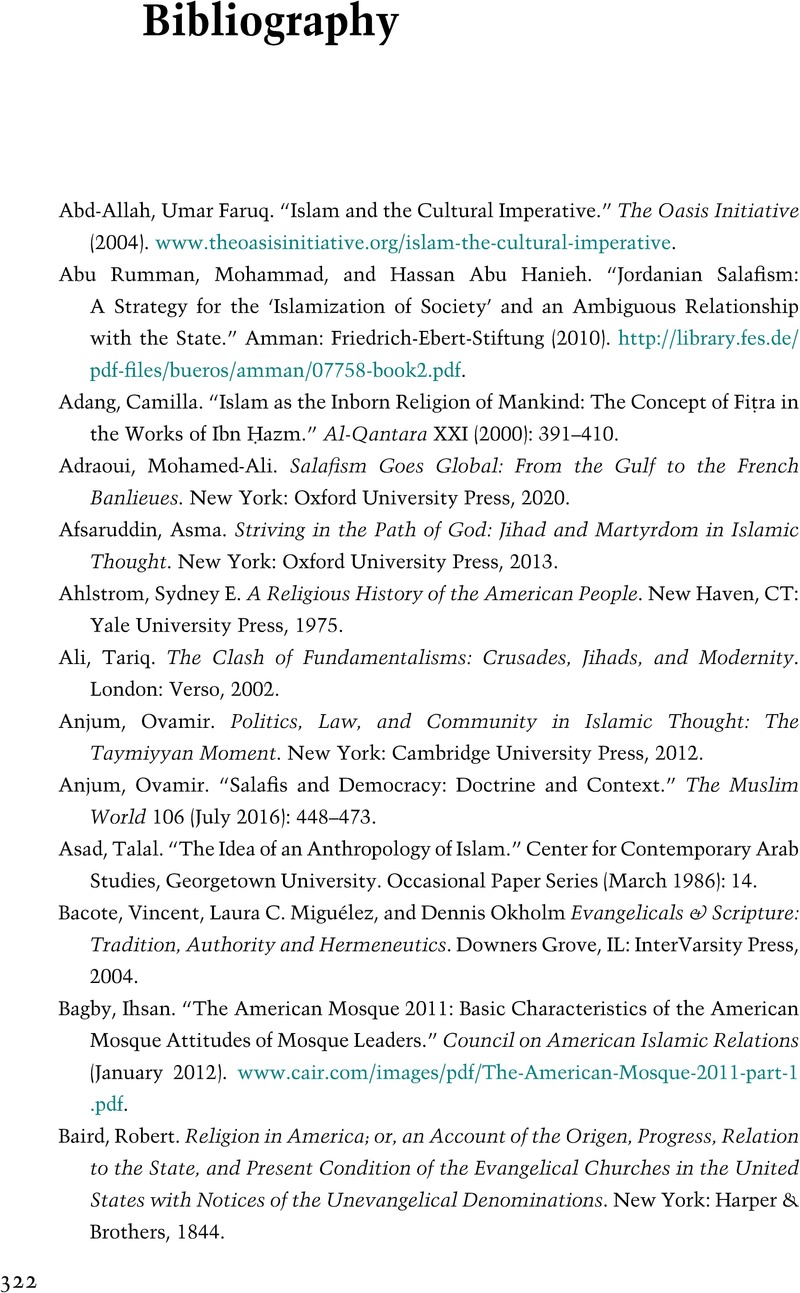Book contents
- Scripture People
- Scripture People
- Copyright page
- Dedication
- Contents
- Foreword
- Acknowledgments
- Introduction
- 1 The Evolution of Two American Species of Scripture People
- 2 What Is a Salafi or an Evangelical Anyway?
- 3 Splitting the Atom of Text and Tradition
- 4 Education and the Democratization of Scripture
- 5 How “American” Can Salafism Be?
- 6 Empowered by Common Sense
- 7 Can We Call Salafism (or Evangelicalism) a Movement?
- Conclusion
- Afterword
- Notes
- Bibliography
- Index
- References
Bibliography
Published online by Cambridge University Press: 27 July 2023
- Scripture People
- Scripture People
- Copyright page
- Dedication
- Contents
- Foreword
- Acknowledgments
- Introduction
- 1 The Evolution of Two American Species of Scripture People
- 2 What Is a Salafi or an Evangelical Anyway?
- 3 Splitting the Atom of Text and Tradition
- 4 Education and the Democratization of Scripture
- 5 How “American” Can Salafism Be?
- 6 Empowered by Common Sense
- 7 Can We Call Salafism (or Evangelicalism) a Movement?
- Conclusion
- Afterword
- Notes
- Bibliography
- Index
- References
Summary

Information
- Type
- Chapter
- Information
- Scripture PeopleSalafi Muslims in Evangelical Christians' America, pp. 322 - 340Publisher: Cambridge University PressPrint publication year: 2023
